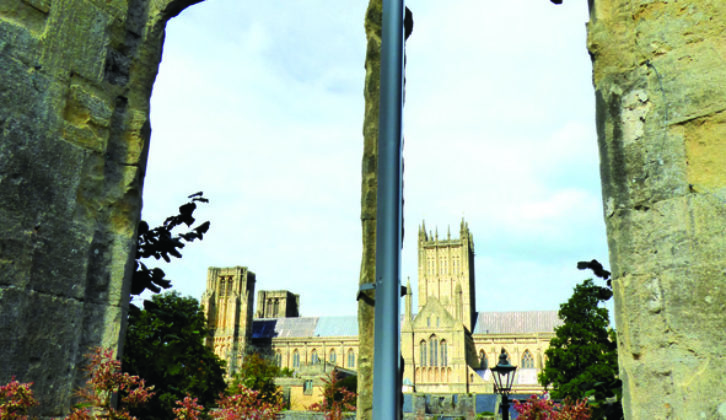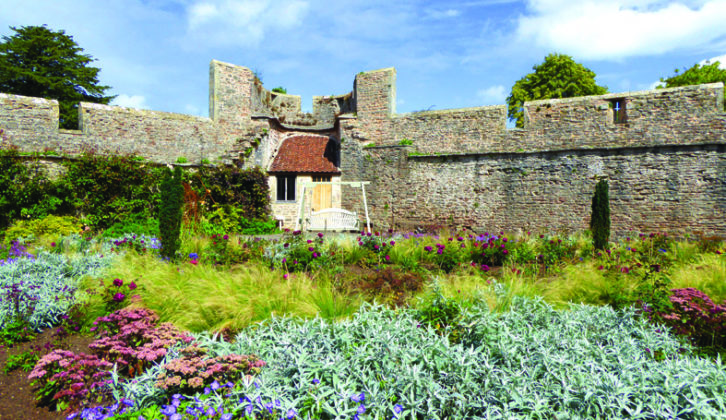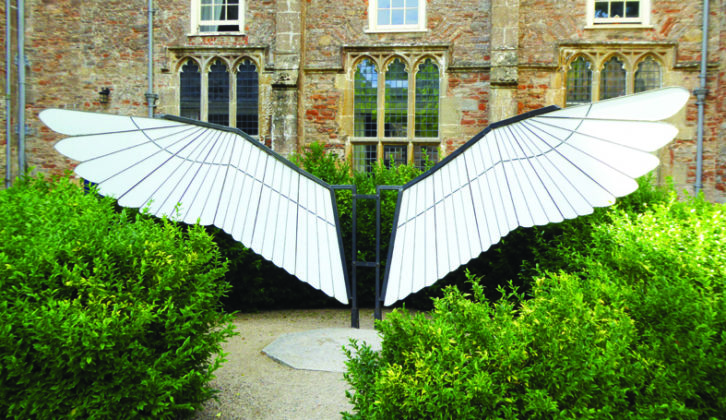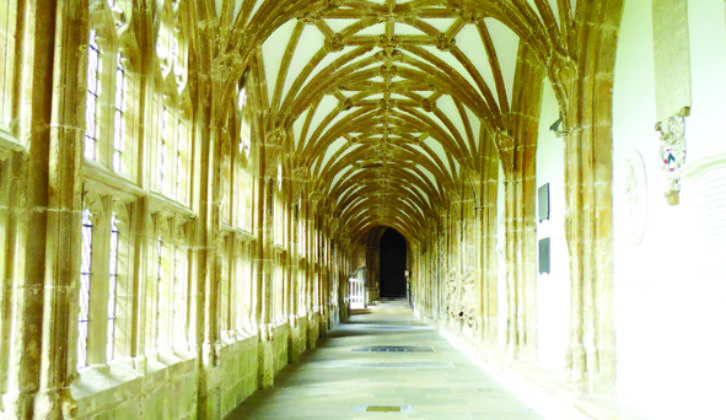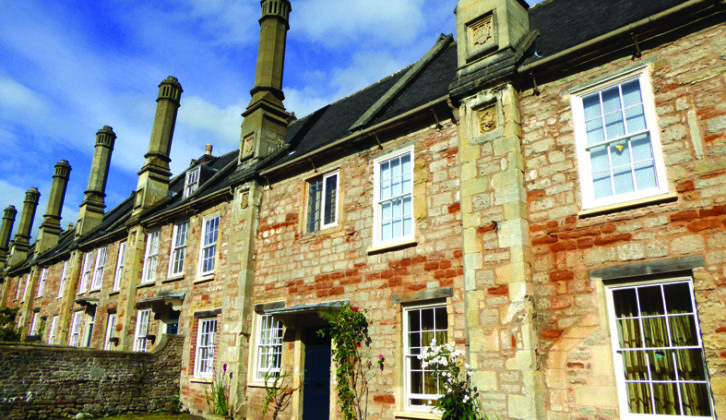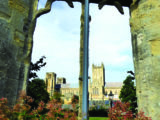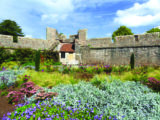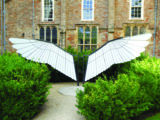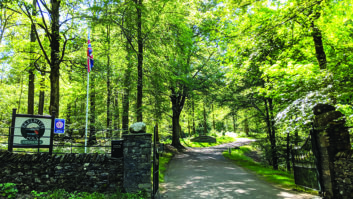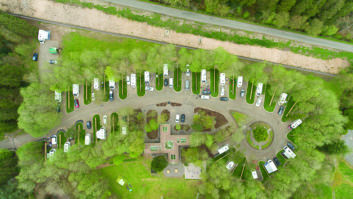Whatever would genteel Jane Austen have made of modern-day Bath? Hordes of tourists, booming street music, fast food, and a man in top hat and tails (purporting to be Mr Darcy) at the entrance to a museum dedicated to her life and work. We did wonder while wandering the streets of Bath before a getaway break in the Mendip Hills.
Fortunately, it’s easy to escape some of the excesses of 21st-century life that cluster around the core of the city’s Abbey, Roman Baths and Pump Room, and get a flavour of what the UNESCO World Heritage Site was like when the great author chronicled life here two centuries ago.
We dodged the crowds on a warm and sunny late-summer day by following the City Trail on foot, which takes about 90 minutes and meanders through the elegant streets.
The trail (available to download) starts at Bath Abbey. This building dates from the 15th century and was one of the last Gothic churches built before the Reformation. It’s an impressive sight, despite the crowds.
Panoramic views
Equally appealing is the elegant, harmonious sequence of Queen Square, King’s Circus and the imposing Royal Crescent, with its panoramic views across sweeping lawns and the southern slopes of the city.
These, along with Great Pulteney Street and Pulteney Bridge, designed by Robert Adam, are considered to be among the very finest examples of Georgian town planning.
Back in the city centre, we lunched on sandwiches and scones with clotted cream at Hands Georgian Tearooms on Abbey Street, before retracing our steps to Pulteney Bridge. There, we embarked on an hour’s relaxing cruise, to the weir at Bathampton Mills and back.
Just minutes from the busy centre, you can glide through a calm oasis of arching willow trees dipping their leaves in tranquil waters – and if you’re lucky, catch a glimpse of one of the resident kingfishers.
Another highlight for me was Cleveland Pools, the UK’s only surviving Georgian lido, whose bracing waters were enjoyed by generations of bathers from Bath and beyond between 1815 and 1984.
The Cleveland Pools Trust is on a mission to bring the Grade II* listed baths back to life as the world’s first naturally treated, heated outdoor swimming pool, with a potential opening date of summer 2021.
Back on dry land, we made our way to our car via Bath’s excellent park and ride, then on to our beautifully located base path The Camping and Caravanning Club’s Cheddar Mendip Heights site. Situated at the heart of the Mendip Hills Area of Outstanding Natural Beauty, in the village of Priddy, it lies midway between Cheddar Gorge and the tranquil cathedral city of Wells, whose understated charms appealed far more than the hustle and bustle of Bath.
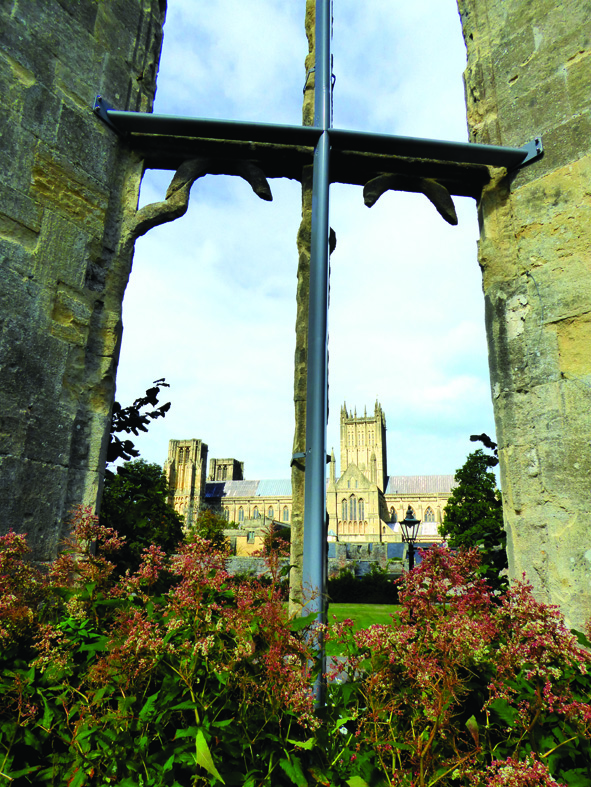
‘Breathtaking’ might be an overused term, but in the case of Wells Cathedral, it is the perfect description of the impact that this 12th-century masterpiece has on visitors.
The West Front, glowing gold in September sunshine, was a truly magnificent sight, and it was an unexpected pleasure to see purple autumn crocuses blooming in the grounds.
Architectural gems
Inside, the cathedral’s rich trove of artistic and architectural treasures is spellbinding, ranging from one of the largest galleries of medieval sculpture in the world, to fine embroideries in the Quire ad the utterly mesmerising Scissor Arches. Often mistaken as modern in design, they were actually an ingenious medieval solution to correcting sinking tower foundations.
The crowning jewel of its substantial collection of medieval stained glass is the Jesse Window, which narrowly escaped destruction in the English Civil War. The cathedral clock, installed in the late 14th century and one of the oldest of its kind in the world, is also enchanting. On the quarter hour, don’t miss the appearance of the miniature jousting knights.
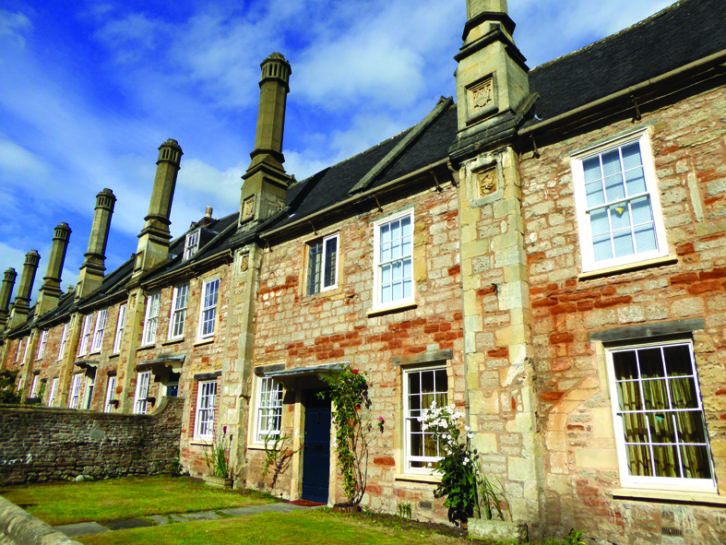
Back outside, we headed for Vicars’ Close, finished in 1363 and the only completely medieval street left in England. With its neat stone cottages distinctive chimneys and original cobbles, it was built of the young clerks in the Vicars Choral, to keep them away from distracting influences and create a communal life. Now Grade I listed, it remains home to the Choral, plus the cathedral’s organists and vergers.
Our next stop was the Bishop’s Palace, home of the Bishops of Bath and Wells for more than 800 years, approached from the High Street via the Bishop’s Eye archway.
Today, its drawbridge and portcullis give you the impression of stepping straight into a medieval fairytale, but the fortifications were originally designed to protect the palace from plague, famine and war.
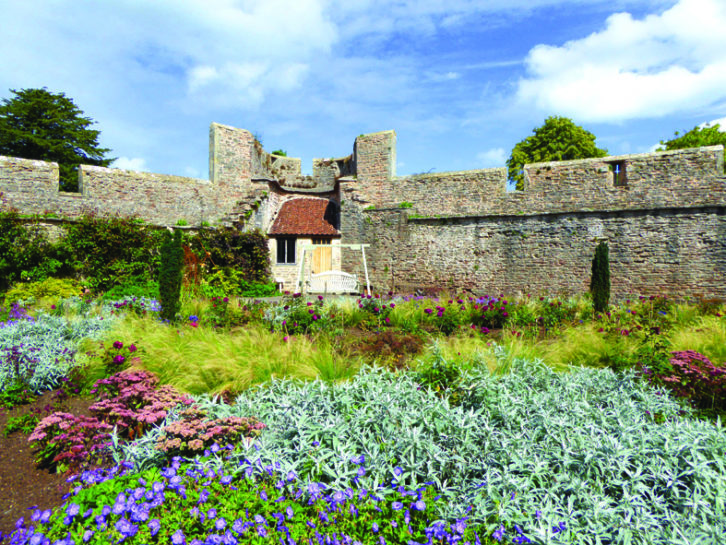
After lunch – toasted Somerset ham and Cheddar cheese sandwiches at The Bishop’s Table café, where the menu is based on local produce and proceeds are ploughed black into maintaining and preserving the site – we explored its 14 acres of dog- and family-friendly pools and gardens.
This is the ideal place to spend a sunny, relaxing afternoon, savouring the peace of the quiet garden, the community garden and the romantic ruins of the Great Hall, appreciating modern sculpture en route and strolling along the rampart walk, with views across to Glastonbury Tor, the Mendip Hills and the cathedral.
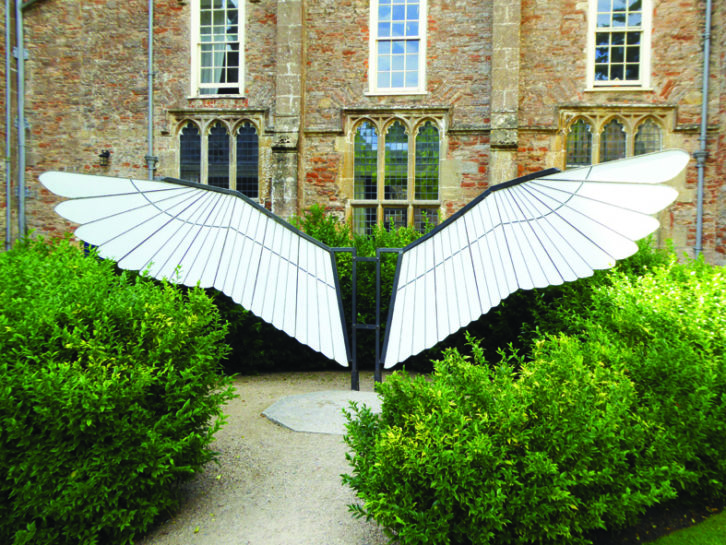
The palace itself is also very fine, with its airy Long Gallery and spacious Undercroft, now used for weddings, events, exhibitions, markets and workshops.
The next day we decided to stay local and explore the charms of Priddy, with its spacious green, sturdy limestone cottages and hurdle stack – a store for the wooden fencing formerly used to pen sheep.
Wildflower walks
Priddy and the surrounding area have been inhabited since the last Ice Age, 10,000 years ago, and nowadays, you can learn all about its long history on wildflower walks created by Somerset Wildlife Trust.
The village is part of a major UK-wide project to save wildflower meadows, which have declined by 97% since World War II. Heartingly, the Mendip Hills host some of the best remaining examples in Britain, and the Trust has been working with local communities to restore key habitats.
We first explored the highlights of the village, such as the 14th-century Church of St Laurence, and Priddy Pools – once used to supply water for mining at Priddy Mineries, now a Site of Special Scientific Interest (SSSI) renowned for dragonflies. Another point of interest is the East Water Drove, one of three routes originally used by local farmers taking their livestock to market, now an important wildlife corridor.
After that, we followed the four-mile Red Route, starting and finishing at Fair Lady Well. The walk, suitable for most abilities, takes in Bronze Age burial places at Priddy Nine Barrows, the Mineries nature reserve, where lead was mined and smelted from Roman times until the early 20th century, and Fair Lady Well, a scheduled monument.
Evocatively named wildflowers to look out for include common bird’s-foot trefoil, eyebright and lady’s bedstraw; we also spotted campion, harebell, gorse and yarrow. My favourite was devil’s-bit scabious, so named because folklore claimed the devil bit off its root, being jealous of its healing properties!
Any visit to the Mendips must include Cheddar Gorge, and the higher reaches of the SSSI, with its steep, tree-clad limestone cliffs, are impressive. However, we were rather disappointed by the commercialised atmosphere of the village below and instead, drove on to the medieval town of Axbridge.
One of the ‘burhs’ (fortified places) that King Alfred built in case the Vikings decided to return after he defeated them, Axbridge has a fascinating history as a mint, river port, commercial hub and home of the Blackberry Fair for more than seven centuries.
This is a great place for a leisurely potter among specialist shops, pubs and tea rooms, although the undoubted highlight has to be King John’s Hunting Lodge, a fine building and museum run by the National Trust.
Despite its slightly misleading name, the house was probably built during the 1460s, so about 250 years after the death of the eponymous king. He did, however, maintain a royal palace at Cheddar.
Again rather misleadingly, the lodge was neither used for hunting, nor was it strictly speaking a lodge. It is actually a very fine timber-framed building, and was probably occupied by one of the rich merchants who made their fortune from the thriving wool trade in the 15th century.
Now home to the Axbridge and District Museum, it offers and interesting insight into the town’s heritage, with exhibits ranging from the Axbridge Nail – a table with a raised lip to prevent coins falling off, used to collect stallholders’ tolls at markets and fairs – to an 18th-century fire engine and the town’s original stocks.
Farewell dinner
Back in Priddy, we marked the final evening of a very enjoyable break with dinner at the traditional and welcoming Queen Victoria Inn, which happily accommodates children, dogs and muddy boots.
My husband chose beef and mushroom pie with chips and peas, washed down with Butcombe Brewery lager, while I went for homemade fish pie with peas and cheesy mash – made with Cheddar, of course!
Trip planner
When to go
The Mendip Hills are special at any time of year, but we chose early September, to avoid the crowds.
Way to go
We travelled from the Peak District via the M6 and M5, leaving at J22 for the A38, turning on to the A371 via Axbridge ten taking the A39 at Wells and turning at Green Ore onto the B3135.
Find out more
- visitbath.co.uk
- mendiphillsaonb.org.uk
- visitsomerset.co.uk
- wellscathedral.org.uk
- bishopspalace.org.uk
- somersetwildlife.org
Food and drink
Where we stayed
Cheddar Mendip Heights C&CC Site

On the outskirts of Priddy, this is the ideal location for sightseeing and eating out, as well as outdoor activities.
The site has fabulous views of the AONB, so not all pitches are flat and chocks might be required. Facilities are excellent, as are the local bread, pastries, meat, eggs and cider from the site shop.
- Address Mendip Heights, Townsend, Priddy, Wells, Somerset, BA5 3BP
- 01749 870241
- www.campingandcaravanningclub.co.uk
- Open 20 March – 3 January
- Charges (pitch+2+hook-up) £23.65-£35.85
If you liked this… READ THESE:
Somerset: Practical Caravan Travel Guide
Six reasons for a great British staycation
Best caravans: Our top picks for every caravanner and budget
If you’ve enjoyed reading this article, why not get the latest news, reviews and features delivered direct to your door or inbox every month. Take advantage of our brilliant Practical Caravan magazine SUBSCRIBERS’ OFFER and SIGN UP TO OUR NEWSLETTER for regular weekly updates on all things caravan related.
Just minutes from the busy centre, you can glide through a calm oasis of arching willow trees dipping their leaves in tranquil waters

